2021 | Perspektive Deutsches Kino
A Worldwide Search for Oneself
The 2021 selection of films for Perspektive Deutsches Kino has had to be reduced slightly due to the pandemic. In this interview, section head Linda Söffker explains the other effects current events have had on the section which, as she discusses, features works full of personal stories, the search for stability in uncertain times and neglected voices in film.
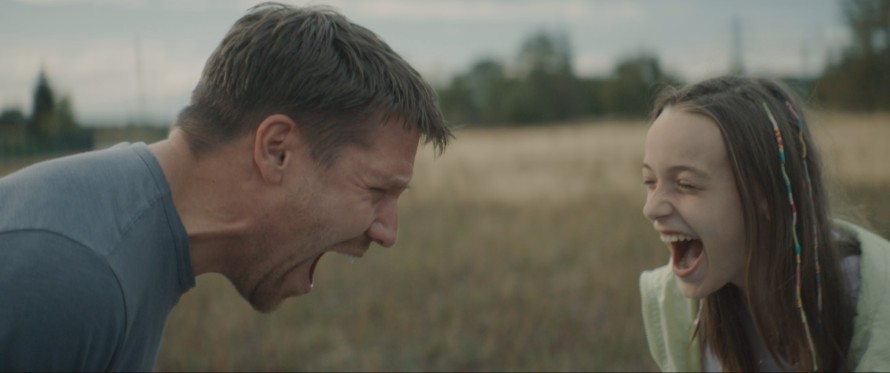
Hanno Koffler, Dora Zygouri in The Seed
What was it like making a selection of films under the current circumstances, with all the associated uncertainty and anxiety?
The worst thing was actually that we couldn’t view everything together with our colleagues. We normally all sit in a cinema and discuss what we’ve seen. But that didn’t happen this year. My colleague Linus de Paoli, who advises me and makes the selection with me, viewed the films at home while I watched them in the office – and then later, exclusively at home, too. We talked by phone afterwards and exchanged impressions. But it wasn’t as easy as in previous years when we would watch everything with colleagues like our programme coordinator Maja Goethel and our copy editor and social media expert Max Huber. It’s important to me to hear the opinions of male colleagues and people who are younger than me, because they have a different perspective and can thus change my assessment of films that might not otherwise have convinced me. I missed this uncomplicated communication this year.
In addition, we didn’t know exactly what we were getting into and what we could screen, because that was very much dependent on the concept of the Berlinale under COVID-19 conditions. And although we now have a two-pronged approach, with an industry event and a public event, it still isn’t entirely clear yet how many cinemas will participate in the summer and how many films we’ll be able to show. What was clear from the start, however, was that this would be a different year and a different programme, that the festival would be smaller and that we would have to reduce in size. A reduction like this is, of course, always painful, but it can often have its advantages as well.
You wrote in the press release that it’s an “interesting selection that characterises the year for Perspektive Deutsches Kino”. What is this characteristic element?
There are always years when certain motifs crop up more frequently. In 2021, there are a striking number of personal stories. Reflections on oneself, family and the past are common themes among younger filmmakers, but this year was noteworthy for the filmmakers taking such an extreme look at what was, what shaped them and who they are now. We had 225 films submitted and I’d say that at least every second one was a personal narrative. And what really stuck out was the prevalence of voice-overs, a personal accompaniment from the directors superimposed on the films.
Another feature is that the films were made all over the world, meaning that a German film is not necessarily immediately recognisable as such. Production conditions have changed, people travel the world and – especially in times like these, when travelling isn’t possible – they are using technical means to tell stories across geographical borders, for example, in Hong Kong, Canada or the USA. This is perhaps caused by the longing to be elsewhere, which is particularly strong at the moment.
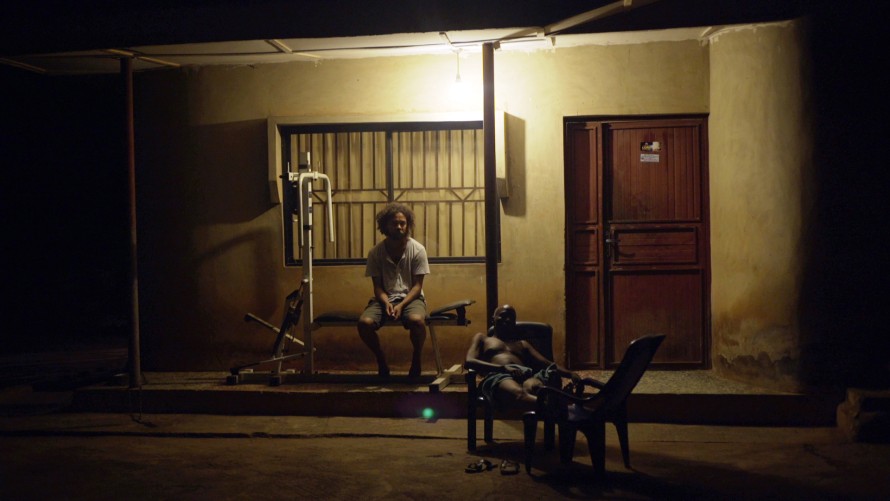
When a farm goes aflame
These personal stories are being told primarily in documentary forms – both in pure documentaries and in hybrids. How did this abundance of documentaries come about?
It’s chiefly a question of what was on offer. A majority of the works we viewed are told in a hybrid form, as feature films with documentary elements. Or in the shape of a documentary with a feature-like dramaturgy, divided into acts and thus keeping the viewer gripped. That’s definitely true for When a farm goes aflame and Instructions for Survival. It’s common for newer filmmakers to use factual reality as a starting point and then to fictionalise it. It is a way of relying on the familiar or finding security in what surrounds them and only then venturing into the imagination.
Only one film in the selection is unambiguously presented as a feature film: Die Saat (The Seed). We can assume that many personal experiences and stories from friends of the director Mia Maariel Meyer and her co-writer Hanno Koffler have fed into it, for example, when it comes to the pressure to perform in society, the coexistence of generations and gentrification. But I wouldn’t consider the way the film is made and shot to be taking a documentary approach.
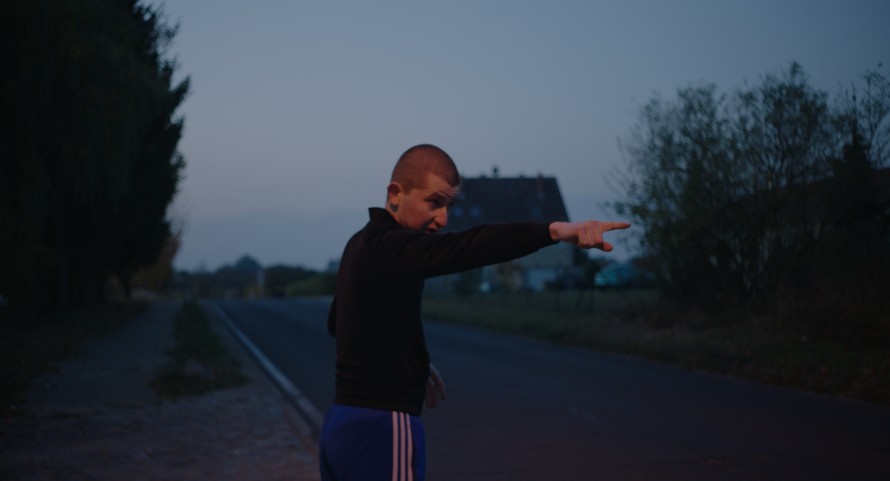
Paul Arámbula in Jesus Egon Christ
Which isn’t the case for Jesus Egon Christus (Jesus Egon Christ)…
The two directors, Saša and David Vajda, undertook an enormous amount of research for their project. The result is a film about drug addicts and people with mental illness who live in an evangelical support centre in Brandenburg, near Berlin. To be able to tell a story about this place and its people, the directors visited a large number of support facilities for drug addicts. They then met other people via recommendations and also spoke to them about their experiences. All these stories flowed into a very loose script that doesn’t follow a traditional act structure. Instead, it unfolds. This gradually creates an image of the community in the facility. A man appoints himself as a priest and tries to bring God to the people who live in the centre. This has great visual power. Even though the film is only 50 minutes long, it definitely belongs in the cinema and on the big screen. There is also no contradiction between choosing a documentary approach and, at the same time, being so bold visually that both the screen is filled with images and the story is given so much space in our heads that it really feels like cinema.
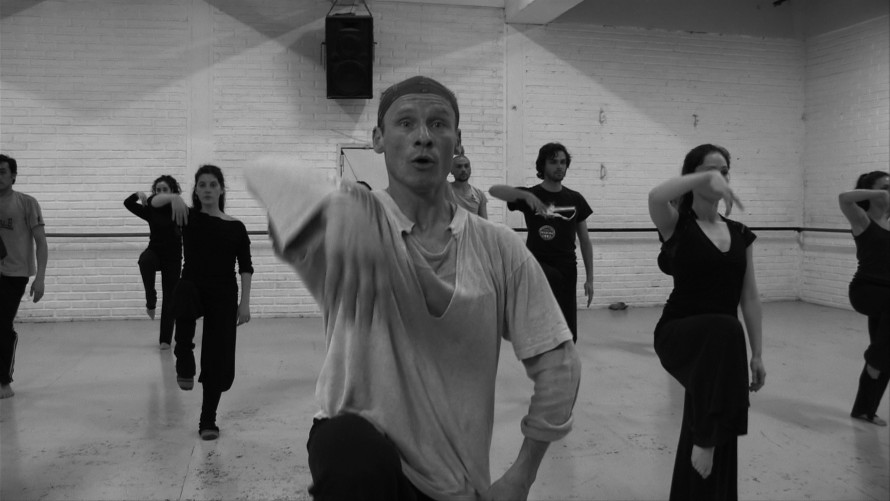
Keep Moving
The documentary In Bewegung bleiben (Keep Moving) emphasises the fact that there need not be a contradiction between documentary content and dramatic structure.
The film brings to mind a theatre play or a piece of classical music divided into acts. A large shared narrative emerges about the various dancers and choreographers who reflect on their past and talk about themselves today and about the GDR in the late 1980s. Even though nine different people tell their stories, the film results in one big story – and it is 140 minutes long! The director Salar Ghazi has a very special talent for editing – that’s what he has mainly done up until now. In Bewegung bleiben is his directorial debut. In it, he demonstrates that he can maintain a narrative flow for 140 minutes that pulls you along so much that you follow every single dancer and their story while, at the same time, keeping an eye on the bigger picture: the way that artists were privileged in the GDR. For their guest appearances, they were allowed to travel to the West and were then always faced with the question: To go back or to stay? Do I go back to the East or do I stay in the West? What do I have there and what do I have here?
It’s a little different with the documentary When a farm goes aflame. Here, the film takes an unexpected turn and brings something new to light for both the director and his mother.
A few years ago, director Jide Tom Akinleminu made a film about his father in Nigeria: Portrait of a Lone Farmer (2013). While he was filming, he discovered – more by accident than design – that his father had a second family in Nigeria. The director moved from Nigeria to Denmark with his mother when he was ten. Although his parents were physically apart, they maintained their relationship, with the father living in Nigeria and the mother with their son in Denmark. What the two in Denmark didn’t realise was that the father then started a second family in Nigeria. This only came to light by chance 30 years later. The film tells us why this happened and how the long silence came about.
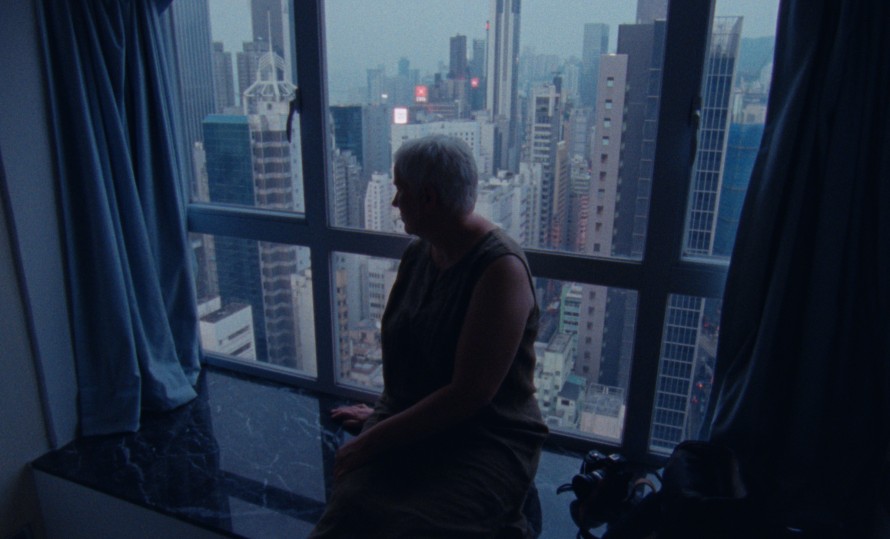
Anke Bak in Wood and Water
In Wood and Water, a mother – who is actually the filmmaker’s own mother – sets off in search of her son. To what extent do you think that the strong focus on personal relationships is a product of our digital society?
We always make out that distances don’t exist in the digital age and that they can be easily overcome with the right technology. Video calls and smartphones can create the feeling that your mother is just around the corner, even if she lives in Germany and her son is in Hong Kong – as is the case in Wood and Water. But that isn’t actually the case. Something is lost in terms of emotions, affection, physical contact ... That’s one aspect. But I think there’s also another reason why so many personal stories are being told and why there’s so much about the search for relationships. It’s undoubtedly connected to the fact that in uncertain times, when we’re not sure what is currently controlling us and where things are heading, we take recourse to the family. More than ever, people are looking for something that gives them strength and support – and that can also be the search for one’s father or mother.
Many personal memories and experiences from the family of the director, Jonas Bak, have found their way into Wood and Water. As a young man, he travelled the world and lived in London and Hong Kong. When his mother retired, he wanted to tell a story about a woman who is lonely but who uses her retirement to discover something new in life. In the film, the mother organises a family reunion at the Baltic Sea to mark her retirement. But her son, who has been away from Germany for three years, once again fails to show up. He’s living in Hong Kong and the airports have been paralysed due to the protests. The mother then takes it upon herself to travel to Hong Kong. She arrives all alone and doesn’t speak the language. It’s a foreign country to her but how she finds her way there on her own really touched me: how she spends a night in a hostel, sharing a bunk bed with a young woman, how she and the concierge from the block where her son lives go out for a meal together or to visit a fortune teller.
The narrative pace also adapts to her point of view: the film almost has something meditative about it and is very focused on what the mother is doing.
The protagonist takes her time to discover the city for herself, to watch the protests and form her own impression of things. The pace is adjusted to her age. Her experiences aren’t all immediate and quick; instead, she allows them to come slowly and deliberately. As you say, the film has something meditative about it and also features a rather underrepresented group: older people on a journey of discovery. Of course, there are many films about older people, but most are about young people discovering the world. When someone directs their first feature-length film and chooses to make it about their mother and how she sees the world, I find that a special point of view.
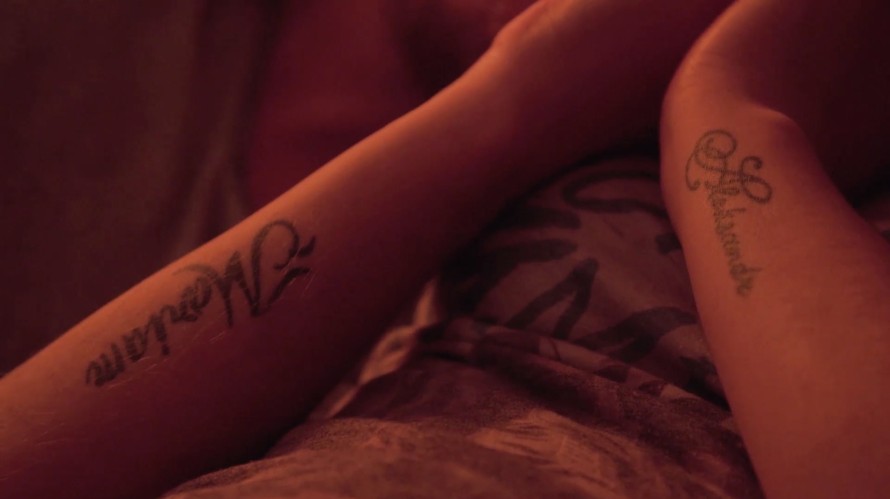
Instructions for Survival
The titular question of your programme this year is: “How and Where Do We Want to – or Can We – Live?” For Alex and Mari, the protagonists of the documentary Instructions for Survival, this question is very existential.
In this film, Alexander has to live in secrecy in his Georgian homeland because of his trans identity. He’s unable to find legal work because the gender stated in his passport is “female”. So he runs the risk of his cover being blown as soon as he has to identify himself. The couple can only see one possible way out: to leave the country so Alex can finally get his male identity affirmed in his official documents. They decide that Mari will become a surrogate mother and bear a child for a European woman. For this, she’ll be paid 12,000 dollars, which is enough money to go to Europe.
But not all their problems are solved there. Although Alex receives his official identification papers, which is a liberation for them both, their asylum application and search for work are difficult. This is what the film also shows: they’re not in a golden West that brings salvation. Above all, they’re homesick. The two of them long to go home, to be back in their own language, with their friends.
Considering the very global locations and biographies of the directors, a question remains that you touched on at the beginning: What identifies a film as German?
That’s not that easy to say. A film is considered to be “German” if the majority, over 50 percent, of its production funding comes from Germany. It doesn’t matter where the director comes from. They don’t have to currently live in Germany either. But when we talk about a German film that is recognisable as such, it’s mostly about the fact that the language is German or that it is set somewhere in Germany. That’s often the most obvious association and it probably applies to most of the films made. But, for example, the Berlinale Competition entry by Alexandre Koberidze, Ras vkhedavt, rodesac cas vukurebt? (What Do We See When We Look at the Sky?), is a feature film that was produced at the DFFB but is set in Georgia. At a first glance, you wouldn’t recognise it as a “German film”. However, in terms of the circumstances of production, it is.
And finally, an organisational question: Will you be presenting awards again this year?
We’re still in the middle of the planning stage for the Summer Special. But yes, we would very much like to present the Compass Perspektive Award and the DEFA Foundation’s Heiner Carow Prize once again in 2021. The discussions are underway.